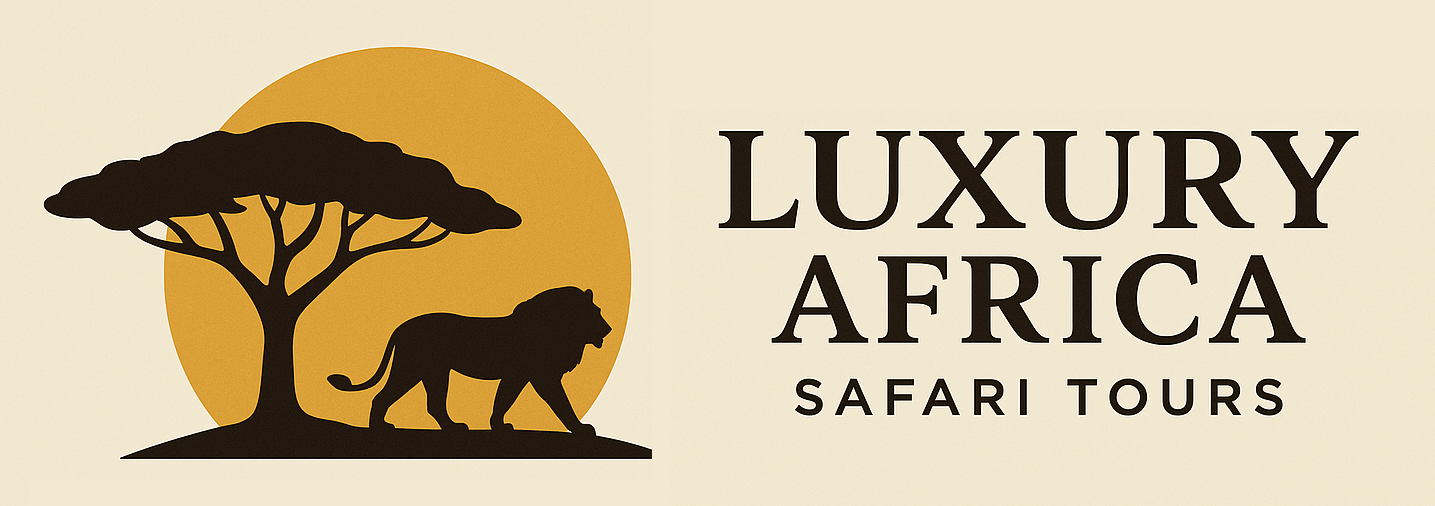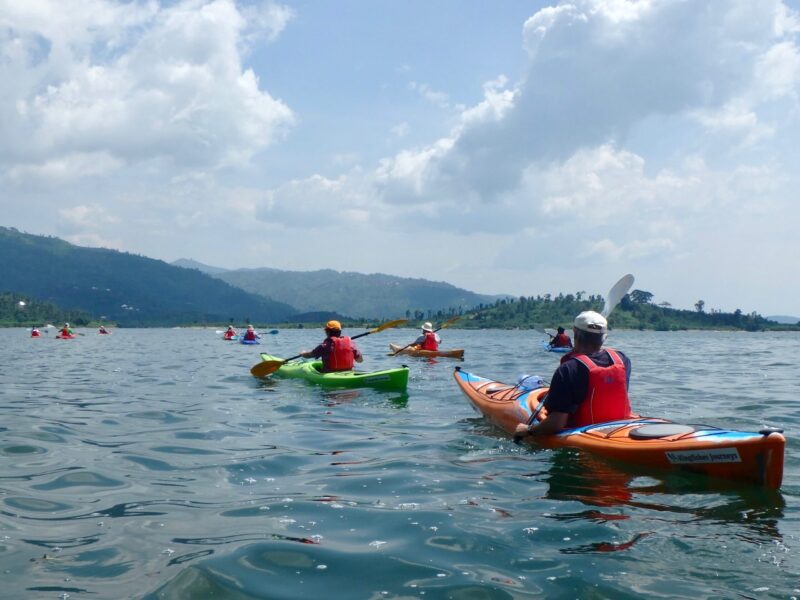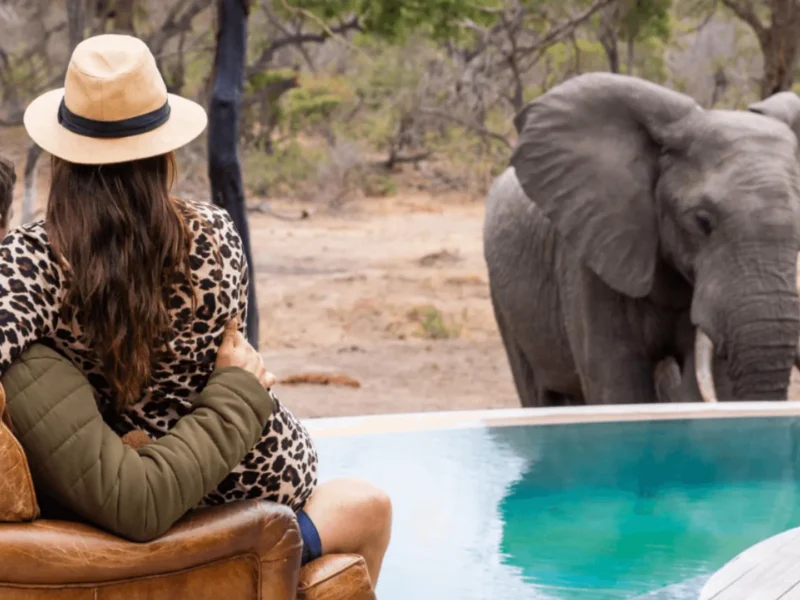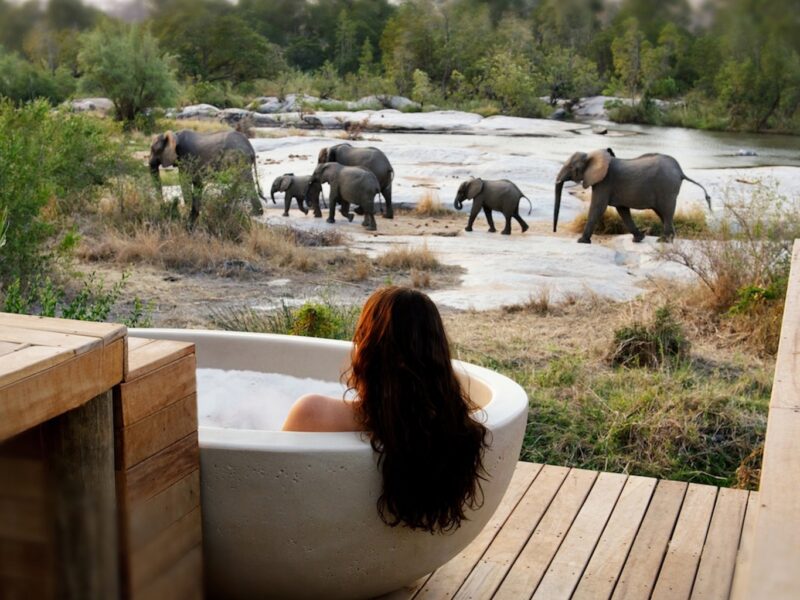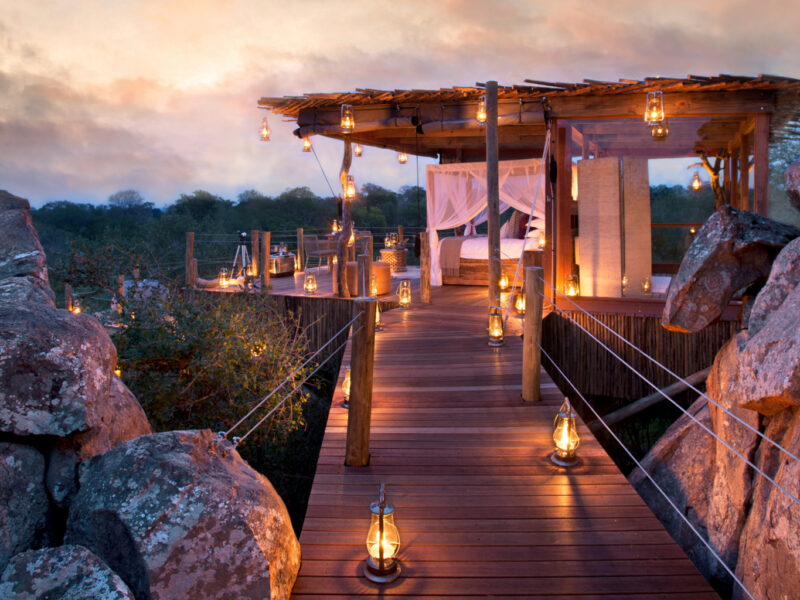When to Visit Botswana: July
July is the height of the dry season — a time when the land lies bare and open, and the secrets of the bush are fully visible. Water is scarce, and with each passing day, more and more animals are drawn toward the Delta and permanent rivers. The air is crisp and clean, the skies vast and cloudless, and the rhythm of safari life takes center stage. This is the Botswana many dream of — wild, thrilling, and raw.
But it’s more than just ideal game viewing; it’s a month of emotional contrasts — the quiet of dawn, the thunder of hooves, the warmth of a campfire under a frozen sky.
Wildlife Sightings at Their Peak
Every movement in the bush is magnified now. With little vegetation to hide behind, predators are easier to track and spot. Lions bask in the open sun. Leopards lounge on exposed tree limbs. Packs of wild dogs hunt in the early morning, chasing impalas through dust trails. Elephants gather in extraordinary numbers, particularly along the Chobe River and in the floodplains of the Okavango.
This is also one of the best times to witness interactions — not just animals feeding or moving, but entire stories playing out: a pride rallying for a hunt, a matriarch leading her herd to water, or a crocodile waiting motionless beneath a narrow crossing.
The Delta in Full Flood
By July, the Okavango Delta has fully received its floodwaters, transforming into a glittering oasis in the middle of the Kalahari. The landscape is surreal: water flowing through desert, palm trees reflecting in still channels, islands ringed by lilies and reeds.
Mokoro excursions drift silently past kingfishers and frogs, while boat cruises offer views of elephants wading chest-deep and red lechwe bounding through shallows. The Delta is at its most navigable, most photogenic, and most soul-stirring.
It’s not just a destination — it’s a living, breathing ecosystem, and July is when it sings.
Chilly Mornings, Glorious Days
Mornings in July can be cold — sometimes close to freezing in desert regions — but the reward is golden light and still air. As the sun rises, the land begins to glow and warm. Days are pleasantly mild and sunny, perfect for long game drives, bush picnics, or sunset sundowners.
The contrast between cold mornings and warm afternoons gives July a rhythm all its own: early starts wrapped in blankets, midday siestas under shade trees, and evenings by the fire as jackals call in the dark.
High Season Energy with Timeless Stillness
July marks the heart of Botswana’s peak safari season, and for good reason. Conditions are perfect, wildlife is abundant, and the landscape is wide open for exploration. Camps tend to fill up well in advance, so early booking is essential — but those who come are rewarded with one of the purest safari experiences on Earth.
And even in high season, Botswana offers solitude. With its low-impact tourism model, even peak months feel exclusive. Out here, it’s never about the number of guests — it’s about the quality of the encounter, the silence of the bush, and the feeling of being exactly where you’re meant to be.
